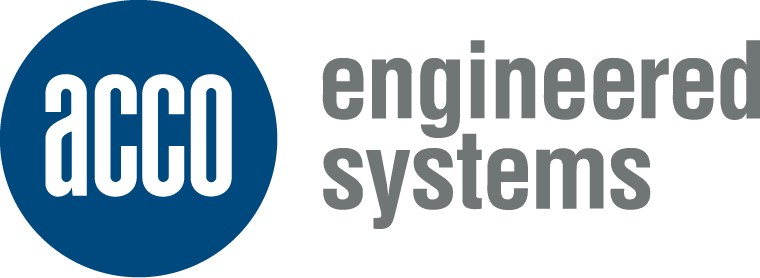Adopting the right technologies can help Mechanical Contractors stay coordinated and deliver higher quality, more profitable projects. Project management is always a challenge when your teams are fighting outdated manual processes. The challenge with many Mechanical Contractors and other types of construction firms is following along with status-quo, often technologies biggest competitor. Advanced technology along with seamless integrations enable you to automate data transfer to remain in sync with different teams that rely on their technology solutions. How do you make this ecosystem work to improve your services?
Mechanical Contractors can revolutionize their delivery capabilities by enhancing construction workflows that produce greater collaboration among the stakeholders involved in a construction project. The end goals are to improve productivity, increase quality, reduce waste, and higher margins. Contractors should look to digital transformations and purpose-built solutions to optimize workflows, improve processes that drive better collaboration and higher quality projects.
Shift from Paper to Digital
The construction industry needs to move away from paper. Although this is shifting, technology standards remain few and somewhat disparate, so many organizations and firms are using siloed technology solutions. Without adapting your technologies to organize and make sense of all the data you’re receiving from multiple sources, you may experience overload, stunting your ability to collaborate efficiently with project partners.
Jackson & Blanc Expands Fabrication Shop
“It was just constant email after email with pictures of their isometric drawings that field staff took on their phones. Sometimes we would get PDFs to print and add cut lists to them ourselves. If we wanted the guys to know what pipe to cut, we had to figure out all the take-offs for them. Then we kept track of deadlines and progress on spreadsheets. Every single step was manual,” said Mr. Underwood.
Before implementing MSUITE, Mr. Underwood had one person in charge of staging the product. That individual always ran from staging station to station troubleshooting issues and ensuring the product was progressing. “This headache is gone because of FabPro’s timing and notification capabilities. Using FabPro, we know in real-time if there’s a problem at any of the stations, including welding, carting, prep and fit, and so forth.”
Automation Helps Shapiro & Duncan Save $1.4M per Year in the Shop
Another way to digitize is to connect your design, fabrication, and field teams with collaborative technology that eliminates paper. Shapiro and Duncan estimate they are saving $100,000 per year by shifting to digital as they no longer use paper between Pre-construction, the VDC department, Fabrication Shop, and Field teams, where deliverables are assembled. In the Fab Shop, users have monitors and tablets instead of paper providing instructions on fabricating. Shapiro & Duncan migrated paper Time Sheet tracking to substantially reduce administrative work per department to minutes instead of hours and eliminate misapplied time and inaccurate timesheets.
Shapiro and Duncan credit MSUITE’s FabPro for bringing a large portion of these departments to a digital environment.
Adopting Integrated Technologies
Deciding to adopt technology for your teams will not solve all the problems faced across the organization. Each department using different technologies to solve their business challenges can pose new challenges. A common one is the lack of integration and the ability to transfer critical information to the next team to ensure they accomplish the project’s next milestones. A collaborative mindset for selecting technologies across the entire company must include the capability to “integrate.”
As a mechanical contractor, your design team’s platform needs to integrate with your fab shop working on the fabrication and assembly.
Integrations enable you to automate multiple workflows and connect teams and their activities. The streamlined communication and enhanced collaboration reduce double-entry and eliminate manual activities. Everyone can remain focused, collaborating, and making the right decisions that increase productivity and mitigate costly mistakes.
Optimizing Project Workflows
The panacea of optimization is drawing insights from critical data collected within the department, inter-departmentally, and across partner workflows. By digitizing your operations, you are eliminating bottlenecks to scaling your business.
A top priority to optimize workflows is to quantify and assess your operational performance (design-to-fabrication-to-construction) to the smallest detail, which is a challenge when using a spreadsheet. The MSUITE platform helps BIM, Fab, and Field Construction Teams build with less risk, higher profits and increase productivity by 40%.
MSUITE’s BIMPro dramatically improves the VDC teams design capabilities 10x. It’s FabPro shop productivity platform tracks users’ completed tasks, from start to finish. They measure things like how long the activity took and who did the work, and all in the background data without the user being required to report. The vast amount of data collected gives MSUITE insights to help Mechanical Shop Managers improve their workflows and reduce data entry.
For example, The Shop Manager may have 20 people in their shop, and on average, they are completing X number of activities per hour. They may want to measure the weight, size, or volume of the items they are manufacturing. MSUITE provides these kinds of insights without manual entry, saving users of all types, hours of effort. FieldPro gives transparency into the BIM and Fab stages while allowing Field foreman to easily track Receiving and Installation Progress on the jobsite.
Technology makes you more Competitive
In today’s evolving construction market, trade contractors must adapt and do more with fewer resources. Adopting the right technology to digitize your operation and automate workflows is a business survival strategy and not another IT cost.








